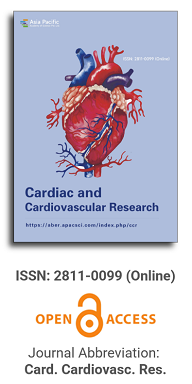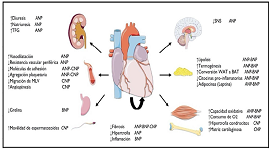
Asia Pacific Academy of Science Pte. Ltd. (APACSCI) specializes in international journal publishing. APACSCI adopts the open access publishing model and provides an important communication bridge for academic groups whose interest fields include engineering, technology, medicine, computer, mathematics, agriculture and forestry, and environment.

Effect of Panaxadiol on gene expression in rat cardiovascular endothelial cells based on RNA sequencing
Vol 3, Issue 1, 2022
Download PDF
Abstract
Objective: To systematically analyze the effect of Panaxadiol on gene expression of cardiac microvascular endothelial cells (cmecs) during lipopolysaccharide (LPS) infection. Methods: by isolating primary cmecs from rats, the cells were divided into control group and experimental group. The control group was stimulated by LPS alone, and the experimental group was stimulated by LPS and Panaxadiol together. After that, the differentially expressed genes and related signal pathways were analyzed by transcriptome sequencing, and some differentially expressed genes were verified by quantitative PCR. Results: Panaxadiol could significantly inhibit the expression of some genes, which were mainly concentrated in inflammatory signal related pathways, metabolic related pathways and epigenetic regulation. Conclusion: Panaxadiol may affect the expression of inflammation related genes through epigenetic regulation, and then regulate the inflammatory response of cmecs.
Keywords
References
- Voss Oliver H, Murakami Y, Pena Mirna Y, et al. Lipopolysaccharide-Induced CD300b Receptor Binding to Toll-like Receptor 4 Alters Signaling to Drive Cytokine Responses that Enhance Septic Shock. Immunity. 2016; 44(6): 1365-1378. doi: 10.1016/j.immuni.2016.05.005
- Kim HM, Kim YM. HMGB1: LPS Delivery Vehicle for Caspase-11-Mediated Pyroptosis. Immunity. 2018; 49(4): 582-584. doi: 10.1016/j.immuni.2018.09.021
- Zhou X, Wu Y, Ye L, et al. Aspirin alleviates endothelial gap junction dysfunction through inhibition of NLRP3 inflammasome activation in LPS-induced vascular injury. Acta Pharmaceutica Sinica B. 2019; 9(4): 711-723. doi: 10.1016/j.apsb.2019.02.008
- Wang X, Bleher R, Brown ME, et al. Nano-Biomechanical Study of Spatio-Temporal Cytoskeleton Rearrangements that Determine Subcellular Mechanical Properties and Endothelial Permeability. Scientific Reports. 2015; 5(1). doi: 10.1038/srep11097
- Hu X, Jiang J, Ma Y. Research progress in preparation and structural modification of protopanaxadiol. Anhui Agricultural Science. 2012; 40(10): 5879-5880.
- Lu Z, Wang Y, Xu H, et al. 20 (s) protopanaxadiol induces apoptosis of human hepatoblastoma hepg2 by down regulating Akt pathway. Chinese Journal of neuropharmacology. 2018; 8(6): 41-43.
- Xu H, Yang J. Meta analysis of the effect of protopanaxadiol on human lung adenocarcinoma A549 cells. Gansu science and technology. 2016; 32(4): 135-137.
- Rhodes A, Evans LE, Alhazzani WL, et al. Surviving Sepsis Campaign: International Guidelines for Management of Sepsis and Septic Shock: 2016. Intensive Care Med. 2017; 43(3): 304-377.
- Blanco J, Muriel-Bombín A, Sagredo V, et al. Incidence, organ dysfunction and mortality in severe sepsis: a Spanish multicentre study. Critical Care. 2008; 12(6): R158. doi: 10.1186/cc7157
- Rudiger A, Singer M. The Heart in Sepsis: From Basic Mechanisms to Clinical Management. Current Vascular Pharmacology. 2013; 11(2): 187-195. doi: 10.2174/1570161111311020008
- Goldenberg NM, Steinberg BE, Slutsky AS, et al. Broken Barriers: A New Take on Sepsis Pathogenesis. Science Translational Medicine. 2011; 3(88). doi: 10.1126/scitranslmed.3002011
- Lee WL, Slutsky AS. Sepsis and Endothelial Permeability. New England Journal of Medicine. 2010; 363(7): 689-691. doi: 10.1056/nejmcibr1007320
- Fan J, Liu D, He C, et al. Establishment of a new model of inflammation induced atherosclerosis in rats and the preventive and therapeutic effects of RB. Chinese Journal of experimental animals. 2014; 38(6): 60-65.
- Leng X, Jia L, Wang Y, et al. Effect of ginsenoside Rb1 pretreatment on the expression of myocardial apoptosis related proteins in rats with acute myocardial ischemia induced by isoproterenol. Liaoning Journal of traditional Chinese medicine. 2017; 44(1): 184-186.
- Wu H, Jia Q. Protective effect of ginsenoside RB3 on myocardial ischemia-reperfusion injury in rats. China tissue engineering research. 2016; 20(49): 7320-7326.
- Zeng X, Li J, Li Z. Ginsenoside Rd mitigates myocardial ischemiareperfusion injury via Nrf2/HO-1 signaling pathway. Int J Clin Exp Med. 2015; 8(8): 14497-14504.
Supporting Agencies
Copyright (c) 2022 Dongyang Guo, Xiufang Hong, Lingzhi Shen, Genxiang Mao, Zhouxin Yang

This work is licensed under a Creative Commons Attribution 4.0 International License.

This site is licensed under a Creative Commons Attribution 4.0 International License (CC BY 4.0).

Prof. Prakash Deedwania
University of California,
San Francisco, United States




